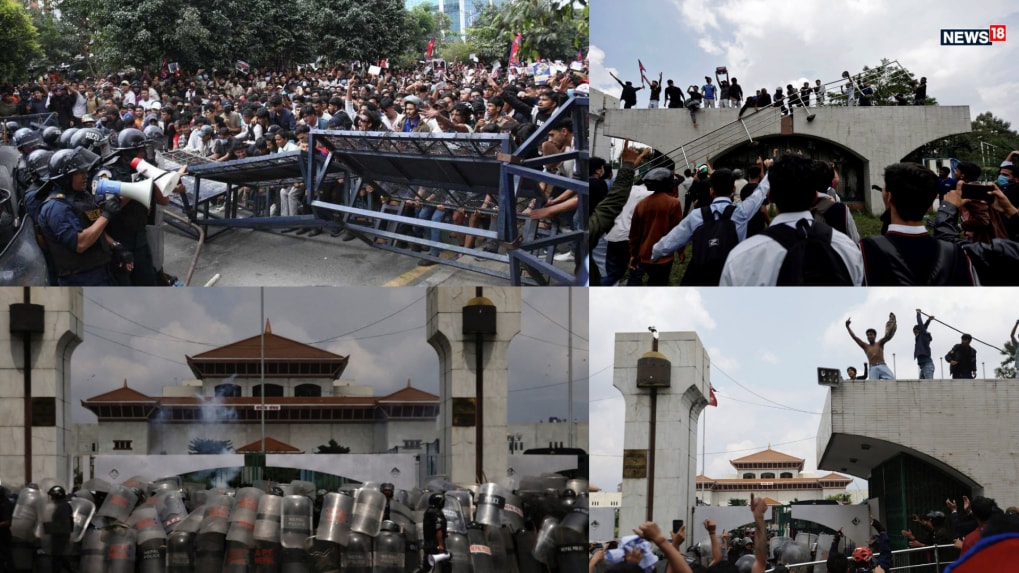Advertising
From Pink Slips to Silent Sidelining: Inside adland’s layoff and anxiety crisis

Across the streets of the Nepali capital, tens of thousands of young demonstrators - driven by Generation Z - have ignited one of the country’s most fervent public protests in recent memory. Their trigger? A sweeping government order blocking 26 major social media platforms, including Facebook, Instagram, WhatsApp, YouTube, X, Reddit, LinkedIn, Signal and Pinterest, after these companies failed to register with authorities.
For youth who rely on digital platforms for education, expression and activism, the shutdown was a gut blow. TikTok, Viber and a few others remain accessible - but most of the social fabric is now offline
What Spiraled Into a Full-Scale Uprising
Gen Z protestors streamed into the streets early Monday, converging on government strongholds - particularly near Parliament in New Baneshwor. Equipped with books, wearing school uniforms and chanting slogans like "Stop corruption, not social media," they pressed forward.
Authorities responded with force: tear gas, water cannons, rubber bullets and batons were unleashed as police attempted to disperse the crowds. Barricades were breached, and in several instances, protesters stormed into restricted areas—including the Parliament building complex
The unrest left at least one person dead and around 80 injured, according to government figures.
Faced with mounting tension, the Kathmandu District Administration imposed a curfew in New Baneshwor and surrounding neighborhoods from 12:30 p.m. to 10 p.m., banning gatherings and movement in strategic zones.
The ban — and the backlash it triggered — arrived amid an ongoing legislative push. The Oli administration has proposed a bill mandating that social media platforms appoint local liaison offices and accept government oversight— a move rights groups and critics decry as censorship cloaked in the guise of regulation.
Corruption Meets Digital Repression
Fueling the outrage is more than digital frustration - it’s economic and political discontent. Trust in the government is low, especially among younger Nepalis who see corruption as pervasive. The slogans echo this sentiment: it’s not just social media they’re defending, but democratic values and accountability.
Journalists joined the protestors earlier, marching in solidarity against the social media clampdown.
Public figures too joined the chorus. Nepalese actors Madan Krishna Shrestha and Hari Bansha Acharya publicly backed the youth movement, amplifying its reach beyond the streets.
What This Means for Nepal’s Economic and Digital Future
For businesses and civil society, the shutdown of ubiquitous platforms is more than symbolic - it disrupts marketing, commerce, education and diaspora communication channels. With 90% of Nepalis dependent on the internet, the knock-on effects are substantial.
Moreover, the bill awaiting parliamentary approval threatens to reshape Nepal’s digital economy, potentially raising costs, discouraging investment and entrenching state control over global tech companies.
Nepal stands at a crossroads: will the government double down on regulation and control, or will it engage with the very voices that are challenging its legitimacy? The current upheaval is a vivid illustration of how digital restrictions can galvanize entire generations - and how business, culture, and governance are now inextricably entwined in the age of social media.
From purpose-driven work and narrative-rich brand films to AI-enabled ideas and creator-led collaborations, the awards reflect the full spectrum of modern creativity.
Read MoreLooking ahead to the close of 2025 and into 2026, Sorrell sees technology platforms as the clear winners. He described them as “nation states in their own right”, with market capitalisations that exceed the GDPs of many countries.